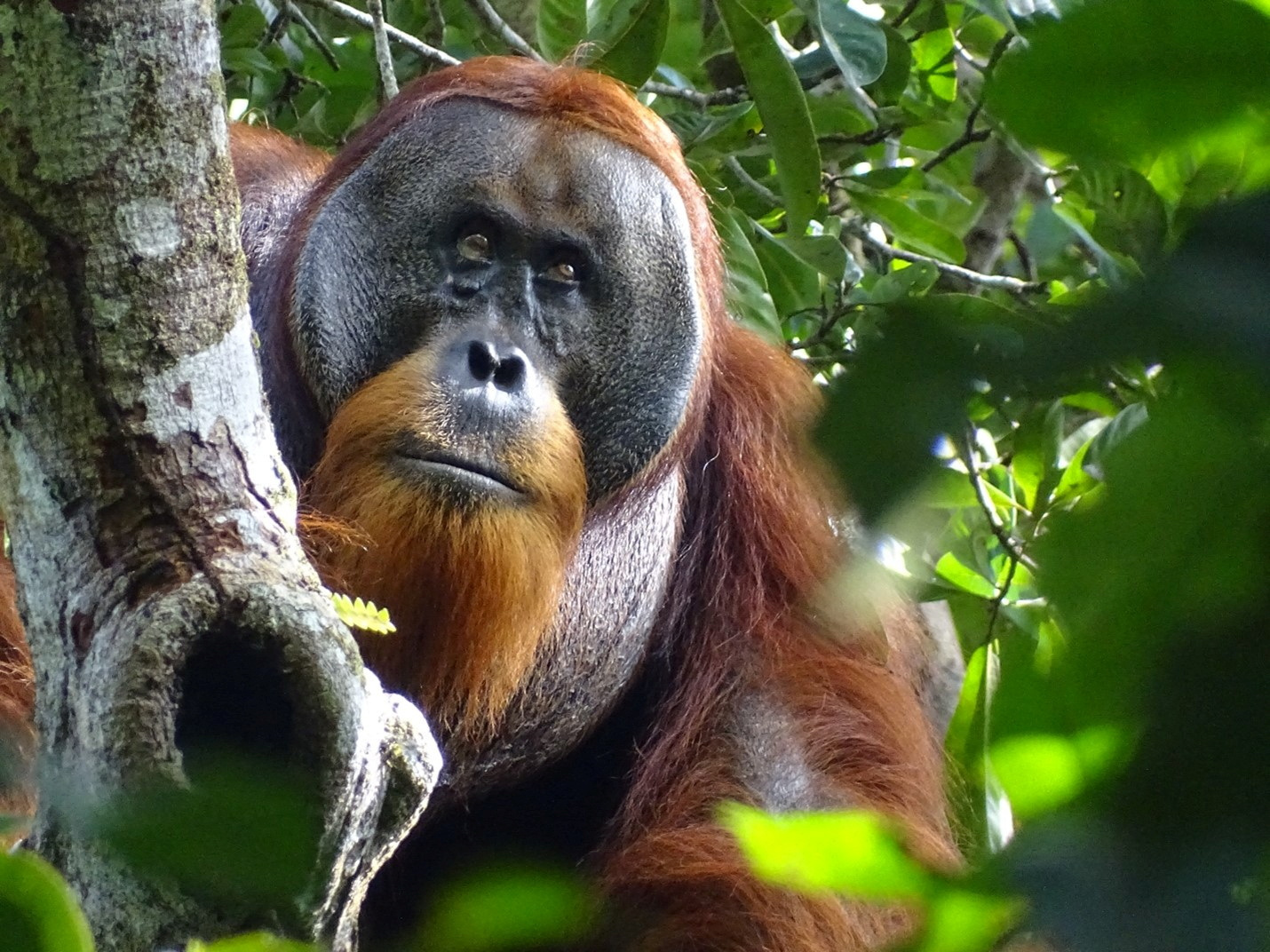
An orangutan in Indonesia has been observed appearing to treat a wound with a medicinal tropical plant – the latest example of how some animals attempt to soothe their own ills with remedies found in the wild.
Scientists saw the Sumatran orangutan named Rakus pluck and chew up leaves of a medicinal plant used by people throughout Southeast Asia to treat pain and inflammation. The adult male then used his fingers to apply the plant juices to an injury on the right cheek. Afterwards, he pressed the chewed plant to cover the open wound like a makeshift bandage, according to a study in Scientific Reports that was released on Thursday.
Previous research has documented several species of great ape foraging for medicines in forests to heal themselves, but scientists had not previously seen an animal treat itself in this way.
“This is the first time that we have observed a wild animal applying a quite potent medicinal plant directly to a wound,” said co-author Isabelle Laumer, a biologist at the Max Planck Institute of Animal Behaviour in Konstanz, Germany.
The observations took place in the Gunung Leuser National Park on the Indonesian island of Sumatra when the researchers spotted Rakus had an injury in June 2022. They believe he had been hurt while fighting with rival male orangutans.
The team then saw Rakus chewing the leaves of a plant with the scientific name Fibraurea tinctoria “without swallowing them and using his fingers to apply the plant juice from his mouth directly”.
The plant, known as Akar Kuning in Indonesia, is rarely eaten by orangutans in the peat swamp forest area, which is home to about 150 critically endangered Sumatran orangutans.
Photographs showed the animal’s wound closed within a month without any problems.
Rakus, believed to have been born in 1989, is a flanged male, with large cheek pads on both sides of the face – secondary male sexual characteristics. He is one of the area’s dominant males.

‘Very likely it’s self-medication’
Scientists have been observing orangutans in Indonesia’s Gunung Leuser National Park since 1994.
“It’s a single observation,” said Emory University biologist Jacobus de Roode, who was not involved in the study. “But often we learn about new behaviours by starting with a single observation.
“Very likely it’s self-medication,” de Roode added, noting that the orangutan applied the plant only to the wound and no other body part.
The study’s co-author, Caroline Schuppli at Max Planck, said it was possible Rakus had learned the technique from other orangutans living outside the park and away from researchers’ daily scrutiny.
Scientists have previously recorded other primates using plants to treat themselves.
Orangutans in Borneo, the island shared between Brunei, Indonesia and Malaysia, have been known to rub themselves with juices from a medicinal plant, possibly to reduce body pains or chase away parasites.
Chimpanzees in multiple locations have been observed chewing on the shoots of bitter-tasting plants to soothe their stomachs. Gorillas, chimpanzees and bonobos swallow certain rough leaves whole to get rid of stomach parasites.
“If this behaviour exists in some of our closest living relatives, what could that tell us about how medicine first evolved?” said Tara Stoinski, president and chief scientific officer of the nonprofit Dian Fossey Gorilla Fund, who had no role in the study.







